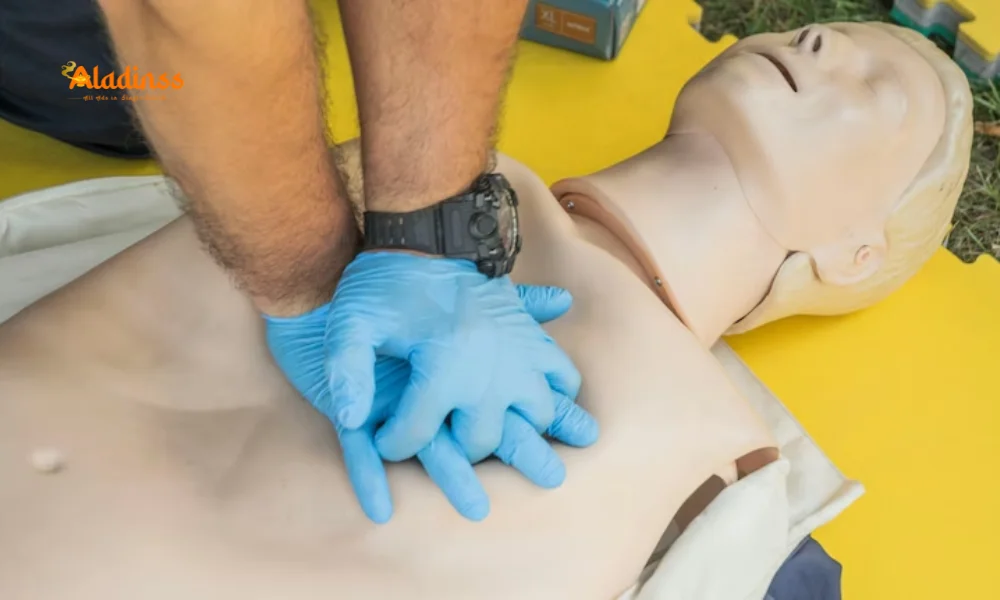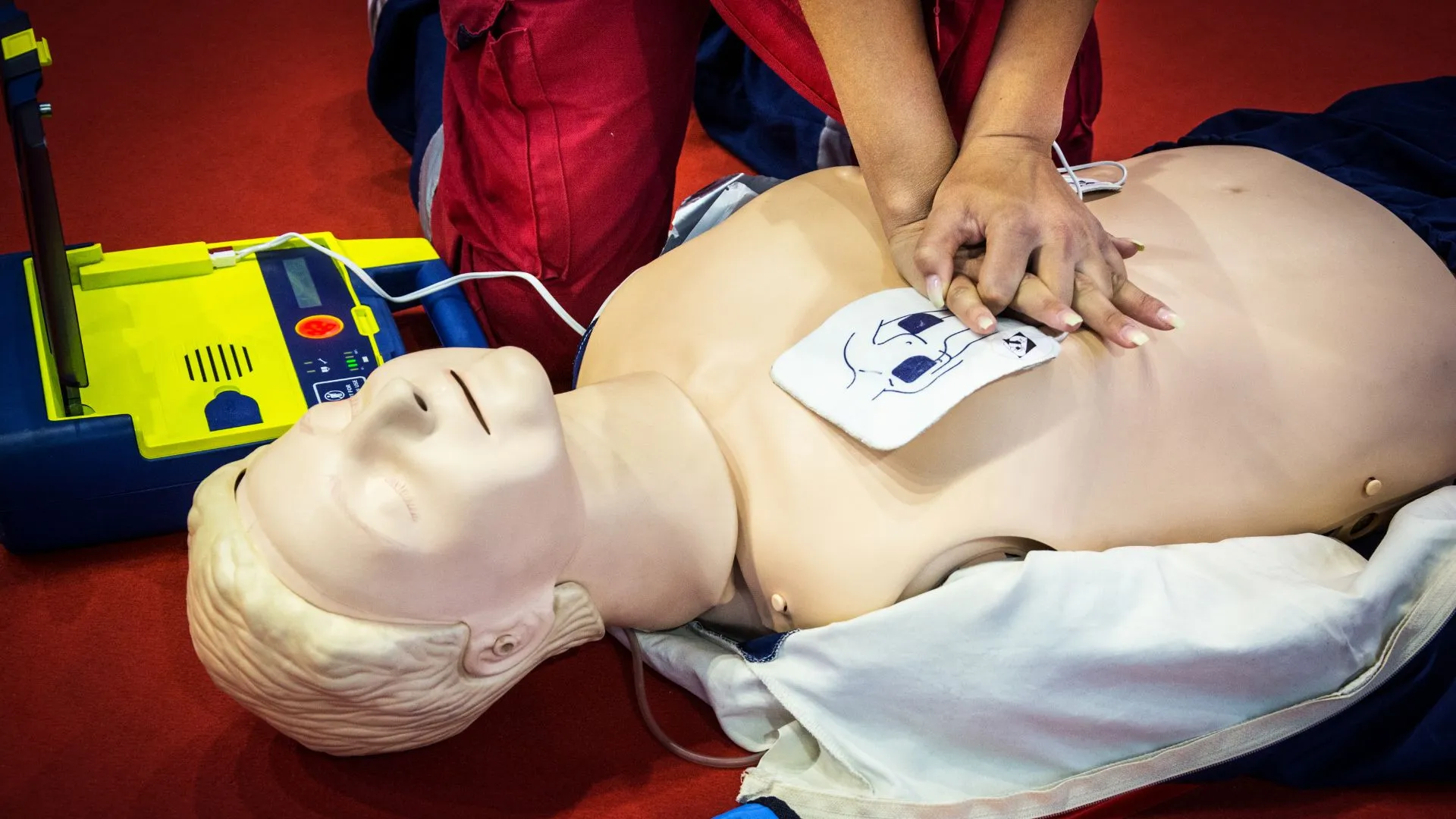Learn CPR in 6 Simple Steps: Save Lives Fast and Effectively!

How to Give CPR: Save Lives with This Step-by-Step Guide!
Cardiopulmonary resuscitation (CPR) is a critical life-saving technique used when someone’s heart stops beating or they stop breathing, such as during a heart attack or drowning. Knowing how to give CPR can make the difference between life and death in an emergency. A recent training session at Deen Dayal Upadhyaya Junction (DDU) RPF New Loco Barracks highlighted the importance of CPR, equipping Railway Protection Force (RPF) personnel with practical skills to respond effectively. This guide provides a detailed, step-by-step approach to performing CPR, ensuring you’re prepared to act swiftly and confidently.
When a heart attack occurs, the heart ceases to pump blood, stopping the pulse and cutting off oxygen to vital organs. Immediate CPR can restore circulation and oxygenation, buying critical time until medical help arrives. Even those without formal training can perform CPR with proper guidance, making it an essential skill for everyone. CPR training empowers individuals to act decisively, potentially saving lives in emergencies like cardiac arrest or near-drowning incidents.
Why CPR Matters in Emergencies
CPR is a vital intervention when someone’s heart or breathing stops, restoring blood flow and oxygen to the body. During a heart attack, the heart’s ability to pump blood is compromised, leading to a lack of oxygen in the brain and other organs. Without prompt action, this can result in irreversible damage or death within minutes. CPR combines chest compressions and rescue breaths to mimic the heart’s pumping action, maintaining circulation until professional medical help arrives.
The recent workshop at DDU Junction emphasized the urgency of CPR in such scenarios. Dr. R.P. Singh from the Divisional Railway Hospital explained that timely CPR can significantly increase survival chances before hospital treatment. The training demonstrated that even basic CPR skills, applied correctly, can be life-saving, making it a critical skill for both trained professionals and bystanders.

Step-by-Step Guide to Performing CPR
Administering CPR correctly requires a clear understanding of the process. Below is a detailed guide to performing CPR on an adult, based on standard protocols and insights from the DDU Junction training session.
Step 1: Assess the Scene and Person
Before starting CPR, ensure the environment is safe for both you and the person in distress. Check for hazards like traffic, fire, or electrical risks. Approach the person, gently tap their shoulder, and ask loudly, “Are you okay?” Observe for signs of normal breathing (not gasping) for no more than 10 seconds. If the person is unresponsive and not breathing normally, begin CPR immediately. If they are breathing normally, place them in the recovery position—on their side with their head tilted back—and monitor them until help arrives.
Step 2: Call for Emergency Help
If you’re alone, call emergency services immediately before starting CPR. If others are present, instruct someone to call while you begin compressions. Provide the dispatcher with your location and the person’s condition. If possible, use a speakerphone to keep your hands free for CPR. Request an Automated External Defibrillator (AED) if one is available nearby, as it can significantly improve survival chances in cardiac arrest cases.
Step 3: Position Your Hands Correctly
Proper hand placement is crucial for effective chest compressions. Place the heel of one hand in the center of the person’s chest, on the lower half of the breastbone (sternum). Position your other hand on top, interlocking your fingers to maintain stability. Keep your arms straight and position your shoulders directly above your hands to maximize force and minimize fatigue during compressions.
Step 4: Perform Chest Compressions
Begin chest compressions by pushing hard and fast in the center of the chest. Aim for a depth of about 2 inches (5-6 cm) in adults, pressing at a rate of 100–120 compressions per minute (roughly the beat of the song “Stayin’ Alive”). Allow the chest to fully recoil between compressions to ensure proper blood flow. Chest compressions are the cornerstone of CPR, mimicking the heart’s pumping action to restore circulation.
Step 5: Deliver Rescue Breaths
After 30 chest compressions, give two rescue breaths. Tilt the person’s head back gently and lift their chin to open the airway. Pinch their nose shut, place your mouth over theirs to form a seal, and blow steadily for one second until the chest rises. Repeat for a second breath. Resume compressions immediately, maintaining a cycle of 30 compressions followed by two breaths until the person begins breathing, an AED is used, or emergency personnel take over.
Step 6: Using an AED
If an AED is available, turn it on and follow its voice prompts. Expose the person’s chest and attach the adhesive pads as shown in the device’s diagrams. Ensure no one touches the person during the AED’s analysis or shock delivery. Continue CPR as directed by the AED until emergency services arrive or the person shows signs of recovery. AED in CPR can restore a normal heart rhythm in cases of sudden cardiac arrest.
CPR Without Formal Training
Even without formal training, anyone can perform hands-only CPR, focusing solely on chest compressions. This simplified technique involves pressing hard and fast in the center of the chest at a rate of 100–120 compressions per minute. Hands-only CPR is effective in emergencies and can be performed by bystanders until professional help arrives. The DDU Junction training emphasized that even basic compressions can significantly increase survival chances, making it a critical skill for all.
Importance of CPR Training Programs
The CPR training at DDU Junction, led by experts like Dr. R.P. Singh and inspector Pradeep Kumar Rawat, underscores the value of equipping communities with life-saving skills. Participants, including RPF personnel, practiced CPR techniques under expert guidance, ensuring they could respond effectively in real-world emergencies. Such programs empower individuals to act confidently, whether in public spaces, workplaces, or homes, enhancing community safety.
Training sessions like these are crucial for spreading awareness and building confidence in CPR administration. They teach proper techniques, such as correct hand placement and compression depth, reducing the risk of errors during high-pressure situations. Organizations, schools, and workplaces should prioritize CPR training to create a network of prepared responders.
Common Mistakes to Avoid During CPR
While CPR is a straightforward technique, errors can reduce its effectiveness. Here are common mistakes to avoid:
- Incorrect Compression Depth: Pressing too shallowly fails to circulate blood effectively. Aim for 2-2.4 inches in adults.
- Wrong Hand Placement: Compressions off the breastbone can injure ribs or reduce efficacy. Always target the center of the chest.
- Inconsistent Rhythm: Compressions should follow a steady 100–120 beats per minute to maintain circulation.
- Not Allowing Chest Recoil: Failing to let the chest fully rise between compressions restricts blood flow.
- Improper Rescue Breaths: Overinflating or underinflating the lungs can reduce oxygen delivery. Ensure the chest rises with each breath.
Training programs help individuals avoid these errors by providing hands-on practice and feedback. The DDU Junction workshop included live demonstrations to ensure participants mastered proper techniques, reinforcing the importance of precision in CPR.
CPR for Different Scenarios
While the standard CPR protocol applies to most adults, slight variations exist for specific scenarios:
- Children (1-8 years): Use one hand for compressions, pressing about 2 inches deep at a rate of 100–120 per minute.
- Infants (under 1 year): Use two fingers for compressions, pressing about 1.5 inches deep at the same rate.
- Drowning Victims: Prioritize rescue breaths to restore oxygen levels before compressions.
- Pregnant Women: Adjust hand placement slightly higher on the chest to account for the diaphragm’s position.
Understanding these variations ensures CPR is effective across different populations. Consulting with medical professionals or taking certified CPR courses can provide tailored guidance for these scenarios.
The Role of AEDs in CPR
An AED is a portable device that analyzes the heart’s rhythm and delivers an electric shock to restore normal function in cases of sudden cardiac arrest. AEDs are user-friendly, with voice prompts guiding users through the process. Public spaces like airports, malls, and workplaces increasingly have AEDs, making them a critical tool in emergencies. Combining CPR with AED use significantly improves survival rates, as demonstrated in training programs like the one at DDU Junction.
To use an AED, turn it on, attach the pads to the person’s bare chest, and follow the device’s instructions. Ensure no one touches the person during shock delivery to avoid interference. Continue CPR as directed until emergency services arrive. Familiarity with AEDs enhances the effectiveness of CPR, making it a vital skill in modern emergency response.
Community Impact and Commitment
The DDU Junction training session concluded with RPF personnel pledging to use their CPR skills to save lives. This commitment reflects the broader impact of community-based CPR training, empowering individuals to act as first responders in emergencies. By equipping more people with these skills, communities can reduce mortality rates from cardiac arrest and other life-threatening conditions.
Initiatives like these highlight the importance of widespread CPR education. Encouraging schools, workplaces, and community centers to offer training can create a network of capable responders, enhancing public safety and preparedness. The CPR training programs at DDU Junction serve as a model for other organizations aiming to prioritize life-saving skills.
Conclusion: Be Prepared to Save a Life
Learning how to give CPR is an invaluable skill that can save lives in emergencies like heart attacks or drowning. By following these six steps—assessing the scene, calling for help, positioning hands, performing compressions, delivering rescue breaths, and using an AED—you can act confidently and effectively. Training programs, like the one at DDU Junction, demonstrate the power of preparation, equipping individuals to respond swiftly and save lives. Take the initiative to learn CPR and become a vital link in the chain of survival.
Comment / Reply From
No comments yet. Be the first to comment!






